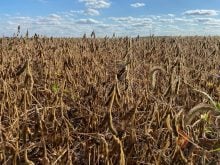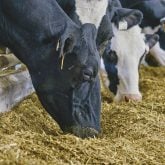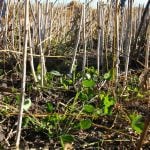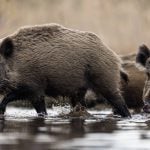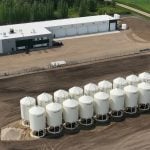As dairy farmers in Ontario and Quebec work through winter stocks of corn silage, a number of weather-related factors from the summer and fall of 2023 have turned up as potential causes for concern.
Wet and overcast weather – in some locations of the record-breaking variety – was persistent from late June through November across the southern regions of both provinces, leading to moist conditions for corn crops during the growing and harvest seasons. They caused difficulties and delays in getting the crop into silos or bunkers.
Now, as farmers break into stored corn silage, some are seeing the effects in feed quality and quantity.
Read Also

Drones a tool for earlier cover crop planting
Drones are a tool that can help with cover crop planting in still-growing corn and soybeans.
Why it matters: Good quality corn silage is a crucial element in nutrition programs for most eastern Canadian dairy farmers.
“Corn silage quality was definitely a hot topic of conversation this year,” said Grand Valley Fortifiers ruminant nutritionist Jeff Vandendool.
He said excess precipitation and insufficient corn heat units during the grain fill period caused lower starch levels in the 2023 crop.
“What many farmers were left with were tall plants with potentially underdeveloped or smaller cobs,” he noted.
Jean-Philippe Laroche, nutrition and forage expert in Quebec for Lactanet, said nitrogen leaching was another factor within moisture-soaked corn fields in 2023 and results are now turning up in stored feed.
“Nitrogen leaching and corn nitrogen deficiency, particularly in unhealthy soils with little organic matter, can lead to a decrease in nutritive value” of the corn silage, Laroche explained.
An increase in mycotoxins is the most well-known effect of wet weather in growing corn, though that problem isn’t as serious as some analysts had predicted.
“Mycotoxins were a large concern in certain pockets of the province, leading to many producers deciding to apply fungicide, allowing the plant to stay greener for longer,” said Vandendool.
Laroche is using recent conversations with producers about the mycotoxin-forming gibberella organism as an opportunity to tell them of a new report based on five years of Ontario Corn Committee trials at Ridgetown and Exeter.
Published in mid-February, the report is available at www.gocorn.net. It assesses resistance to gibberella in a range of corn hybrid varieties.
To lessen the risk of mycotoxins in silage in next year’s crop, Laroche advised, “select a hybrid that is more resistant to gibberella.”
In addition, “avoid contaminated residues of corn or cereals under the growing corn, preferably by having a good crop rotation or by burying the residues with tillage.”
Wet weather last fall delayed harvest or forced it into a short time window. That may have caused rushed bunker-packing, leading to incomplete or poor ensiling.
Another possible outcome is excess yeast formation, which can also affect silage quality.
“Some of (Lactanet’s Quebec) advisors have told me that they encountered more frequent cases of heating silage,” Laroche reported.
“This may be because yeast populations were higher this year since we had more rain. Yeasts are the first organisms that are responsible for aerobic instability, or silage heating.”
According to Vandendool, decreased corn silage quality compared to previous years hasn’t necessarily been only a bad-news story. Alfalfa and grass silages were abundant in much of the province in 2023, and he believes this combined with lower starch content in the corn to increase butterfat levels in some winter milk shipments.
“Many of our producers are experiencing nearly record-level butterfat in their milk,” he said of the Cambridge-based Grand Valley Fortifiers team. “We believe a contributing factor is lower starch in their corn silage along with feeding highly digestible forage” from the other crops.





